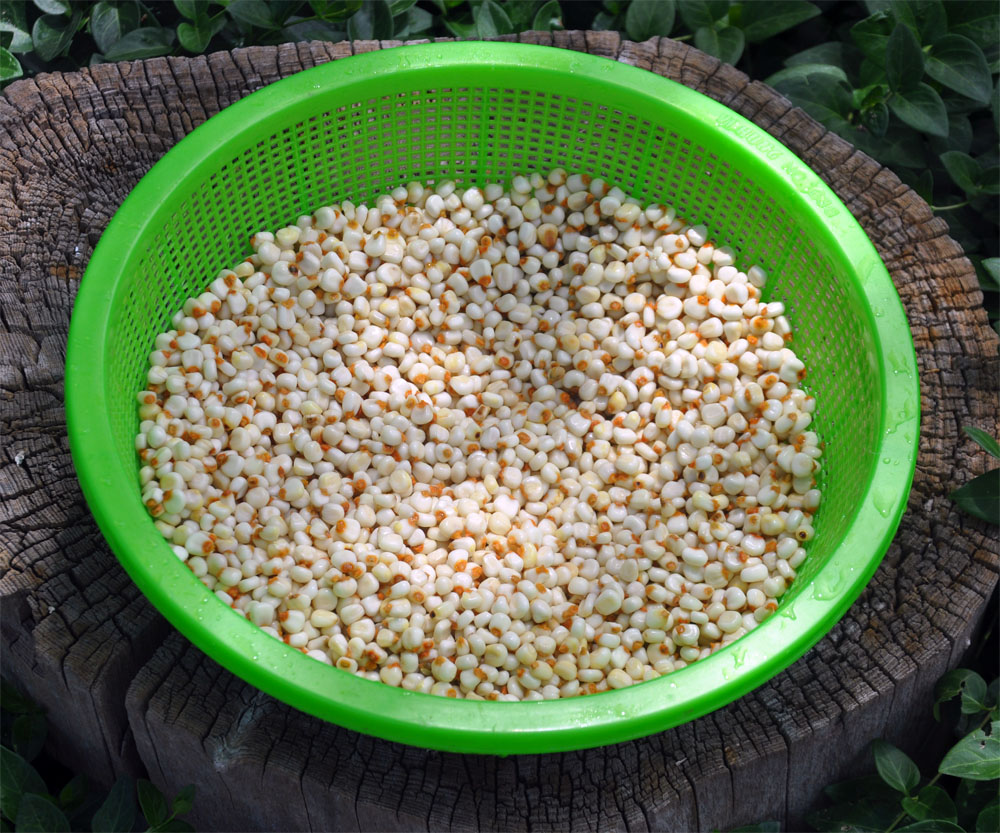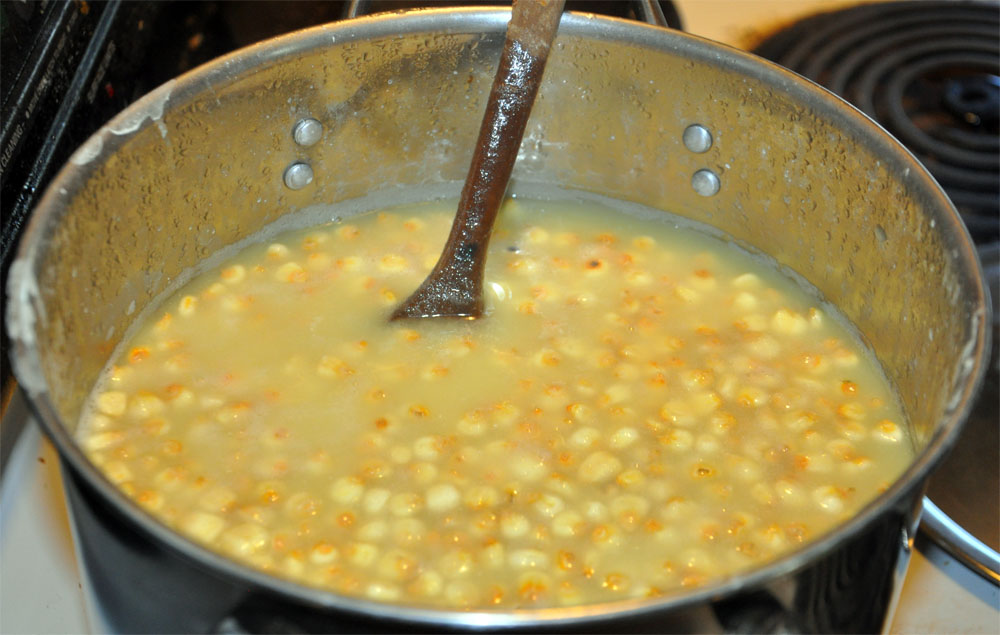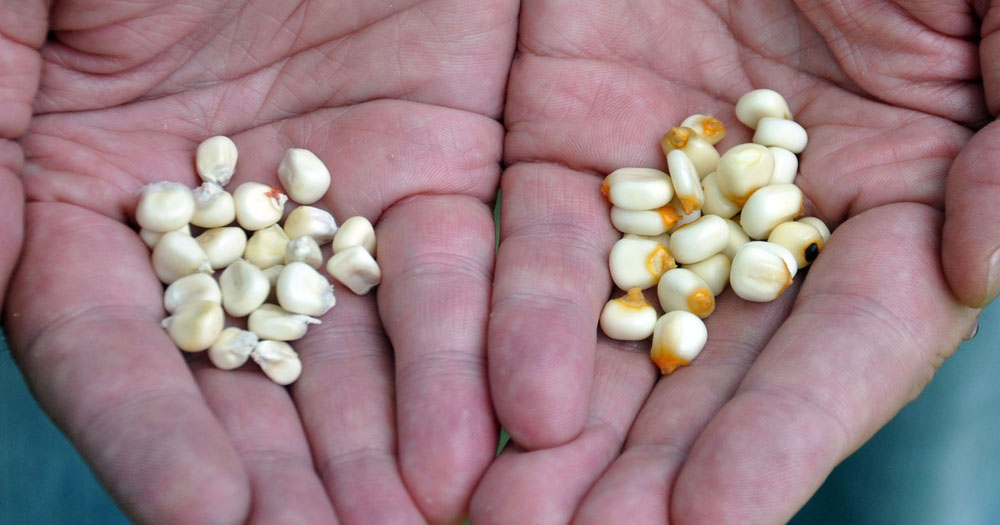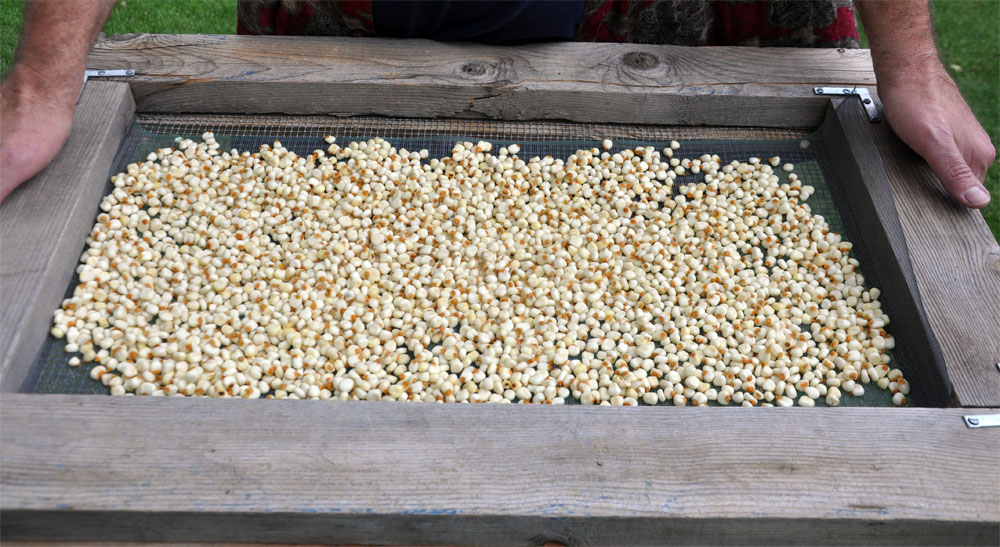
Nixtamal
In and of itself, maize (corn) is a rather poor food source as in an unprocessed state the grains are deficient in free niacin (vitamin B3), an essential nutrient for health. As a result, eating a diet primarily made of ground, raw maize leads to a number of complications, not the least being pellagra, a condition leading to diarrhea, dermatitis, dementia and ultimately death. The native peoples of North America discovered that these problems could be alleviated through a process called ‘nixtamalization’. Developed in Central America at least 3500 years ago, in this process maize kernels are soaked in hot, alkaline water, with the alkalinity coming usually from either the calcium hydroxide (via picking/slaked lime) or the potassium hydroxide (via wood ash). During cooking and soaking the maize hulls are partially dissolved and loosen, with calcium or potassium (depending upon the alkalinity source) being absorbed into the grain. In nixtamal made using slaked lime an almost ten-fold increase in calcium occurs in the cooked grains. Starch within the kernels swells and gelatinizes, with some dissolving into the cooking liquid (called nejayote). The kernel’s proteins are also altered, allowing them to be made more accessible to the human body. The chemical changes not only greatly improve the flavor of the maize kernels but also allow the ground grains to form a plastic moldable dough. Without nixtamalization, many of our favorite Central American foods like tortillas, tamales, and sopes would simply be impossible to make. When maize cultivation spread throughout the world following European contact with the Americas, the cultural information regarding nixtamalization in generally did not follow. As a result, in places where unprocessed ground cornmeal became the dominant source for calories (such as 19th Century France, Italy, and US Deep South, and parts of modern Egypt, South Africa and India), pellagra outbreaks became common. If you grow maize for food, nixtamalization should thus become one of your common kitchen tasks. It has the added advantage of allowing you to use your field corn for more than just autumnal decorations. Note that flint/sweet/pop corns are not best suited to nixtamalization, though it certainly can be done with them. Rather, you are best off using flour or dent corns. 4 quarts water Bring water and lime to boil in a large enamel or stainless steel pot. When it reaches a boil, add in the corn. Bring back to a boil, stirring occasionally. Remove from heat and let soak in the lime water until the hulls dissolve and/or loosen from the corn kernels, at least 1-2 hours and perhaps overnight. Be careful with the hot lime water as it is a bit caustic. However, it is not dangerous to the touch.
Drain the soaked corn through a plastic or non-reactive colander. Rinse well. Place back in pot and cover with cool water. Stir well and drain. Repeat at least 2 more times until all the lime has been washed away. Put the drained kernels back in the pot, cover again with cool water, and rub the kernels vigorously between your hands to remove any adhering hulls. Skim the freed hulls from the water (they float). Repeat until almost all of the hulls have been removed. Rinse kernels in fresh water and drain.
At this stage you have nixtamal (right hand). You can use it in a number of ways: First, if you'd like to use the nixtamal immediately to make a dish calling for posole/hominy, simply return the kernels to a pot, cover with water, bring to a boil, and simmer until tender. Second, if you'd like to make masa dough for tamales or tortillas, at this juncture you'll need to finely grind the kernels. A food grinder using the smallest-holed plate will work fine. Pass the ground nixtamal through the grinder as many times as it takes to make a relatively smooth paste. Lastly, if you'd like to dry the nitxamal to make posole/hominy, all you need to do is place the nixtamal into a food dehydrator or in the sun on covered screens. Then simply allow the kernels to dry until they are no longer cool to the touch (the evaporating water will make the kernels temperature be cooler than body temperature). In Albuquerque it takes 2-3 days for the kernels to fully dry in the sun. Once dry, place in an air-tight container and store in a cool, dark place.
Archive |



